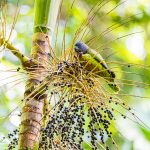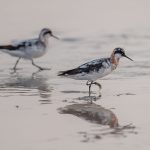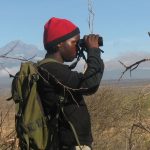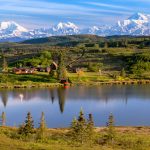When it comes to conservation, everything is connected to everything else. Most of the birds that pass throught the United States during migration either winter elsewhere, breed elsewhere, or, in many cases, spend the majority of their lovely, little lives elsewhere. Thus, efforts to protect wildlife can’t begin and end in one’s own backyard. We must be mindful of each species’ entire life cycle. This is why scientists are calling for protection of the 1.4 billion acre Canadian Boreal Forest, one of the largest intact forest and wetland ecosystems remaining on earth.
According to the Boreal Songbird Initiative, 1,500 highly respected scientists from more than 50 countries around the world have composed a letter recommending the preservation of a minimum of half of Canada’s Boreal Forest in protected areas while allowing only carefully managed development on the rest, in accordance with the Boreal Forest Conservation Framework, a plan already endorsed by Canadian conservation groups, 25 Canadian First Nations, and more than 75 major businesses with annual sales of $30 billion. This is in contrast to the mere 10% that has been protected to date, far less than what is scientifically recognized as necessary to sustain the ecosystem over time.
The Canadian Boreal Forest, stretching from Yukon across the continent to Newfoundland, is under increasing pressure from corporate logging, mining and oil and gas operations, just like every other ecosystem on the planet. This is easy to understand, considering that the global Boreal region, which encircles the northern reaches of the globe, stores more freshwater in wetlands and lakes and more carbon in trees, soil, and peat than anywhere else on Earth. But this ecosystem represents more than just timber and fuel. The Boreal Songbird Initiative reports that Canada’s Boreal region supports three billion migratory songbirds and millions of waterfowl and shorebirds, along with the world’s largest caribou herds, large populations of bears, wolves, and lynx, and native fish in abundance.
Conservation, like ecology, demands respect for the big picture. If you care about wildlife in any part of the Americas, you have to defend the entire landmass from top to bottom, the mainland and the islands. If you’d like to play a small part in promoting protection of the Canadian Boreal Forest, add your name in support of the campaign to urge Canadian policy makers to recognize the importance of the Boreal and their responsibility for its protection.











Leave a Comment